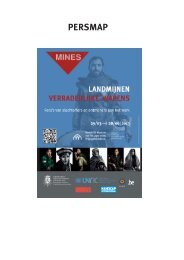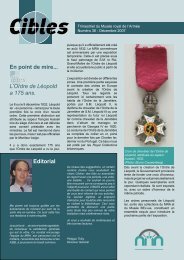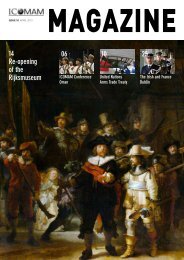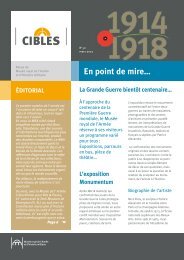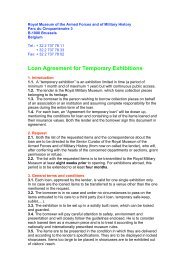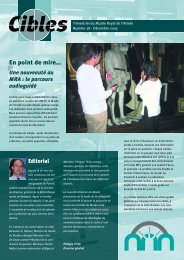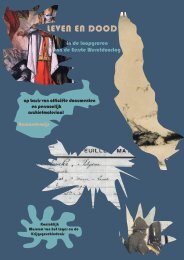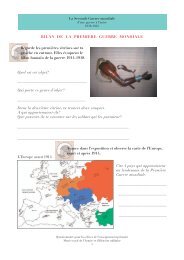Download issue 02 (Low resolution), April 2009 (PDF, 1,7 MB)
Download issue 02 (Low resolution), April 2009 (PDF, 1,7 MB)
Download issue 02 (Low resolution), April 2009 (PDF, 1,7 MB)
- No tags were found...
You also want an ePaper? Increase the reach of your titles
YUMPU automatically turns print PDFs into web optimized ePapers that Google loves.
ArticlesSaving Belgium’s national heritage: TheYser panorama by Alfred Bastien (1920/1)in the Royal Military Museum, BrusselsDr Natasja PeetersIn 1920/1, Alfred Bastien (1873-1955)and his colleagues Charlie Léonard(1894-1953) and Charles Swyncop(1895-1970) undertook a huge project:painting the Panorama of the YserBattle. This monumental work, 14metres high and 120 metres long, waspainted in a cylindrical building in theJubilee Park. Bastien had valuableexperience in this type of undertaking,as he had also painted the Panoramaof Congo for the 1913 World exhibitionand furthermore he had had first-handexperience at the Belgian front as amember of the Belgian SectionArtistique. 1The Panorama shows successiveepisodes of the Yser battle, which wasfought along the Belgian coast from 16to 31 October 1914. It was a true warof attrition, with a large number ofcasualties. Contrary to most otherpanoramas, the painting is not a realvista but a narrative over a two weekperiod. The Panorama’s key momentis the opening of the locks atNieuwpoort on 30 October, causingthe entire Yser river area to flood andputting the German militaryprevalence at risk. Bastien and hiscollaborators not only concentrated onthe heroic part played by the Belgianarmy, but also illustrated the helpprovided by the French and Britishallies. Bastien did however not adopt astrict chronology: fire destroyed theYpres cloth-maker’s hall and cathedralon 21 November (that is after the Yserbattle), but by incorporating this event,Bastien managed to focus both on theBritish soldiers and on the Germanattack on the medieval buildings atYpres, destroying centuries-oldpatrimony and invaluable 15th centurycity archives.Eight scenes constitute thePanorama: the first shows the coastaltowns of De Panne and Nieuwpoort, aRed Cross post, French cavalry, andGerman prisoners of war, as well asQueen Elisabeth in conversation withofficers. The second scene presentsthe Yser estuary at Nieuwpoort, withBelgian and French soldiers, and italso makes the transition to the thirdsubject, the Yser locks, with the lockson the Plassendale canal in thebackground. The artillery readies itselfin the fourth sequence and in the fifththe polders at Tervaete are flooded on28 October. The sixth view stages theruins at Diksmuide and the sevenththe fire of the hall and cathedral atYpres. The last part portrays De Panneand the transport of German prisonersof war, thus making for a seamlesstransition with the first scene.This beautiful piece of nationalheritage had a turbulent history. From1921 to 1924 it was on display in acustom-made carrousel on theLemonnier Avenue in Brussels, whereit was a great success and was visitedand admired by countless tourists. Thesetting was an exquisite example oftechnical savoir-faire, as thepanoramic view and the circularbuilding demanded a specificperspective. In order to strengthen theillusion, the building was enteredthrough a dark trench-like hall-way,the faux-terrain was covered withgrass and reed, and uniformedmannequins completed the picture.In the middle of the 1920s, thePanorama was transferred to acarrousel in Ostend. The building wasdamaged by friendly fire during theSecond World War and also suffereddamage through leaks. The RoyalMilitary Museum 2 acquired thePanorama in 1950 from Alfred Bastien,Figure 1 Colour reproduction of the Yserpanorama, Burning of Ypres. Photo KLM-MRA Brussels30 MAGAZINE ISSUE 01



